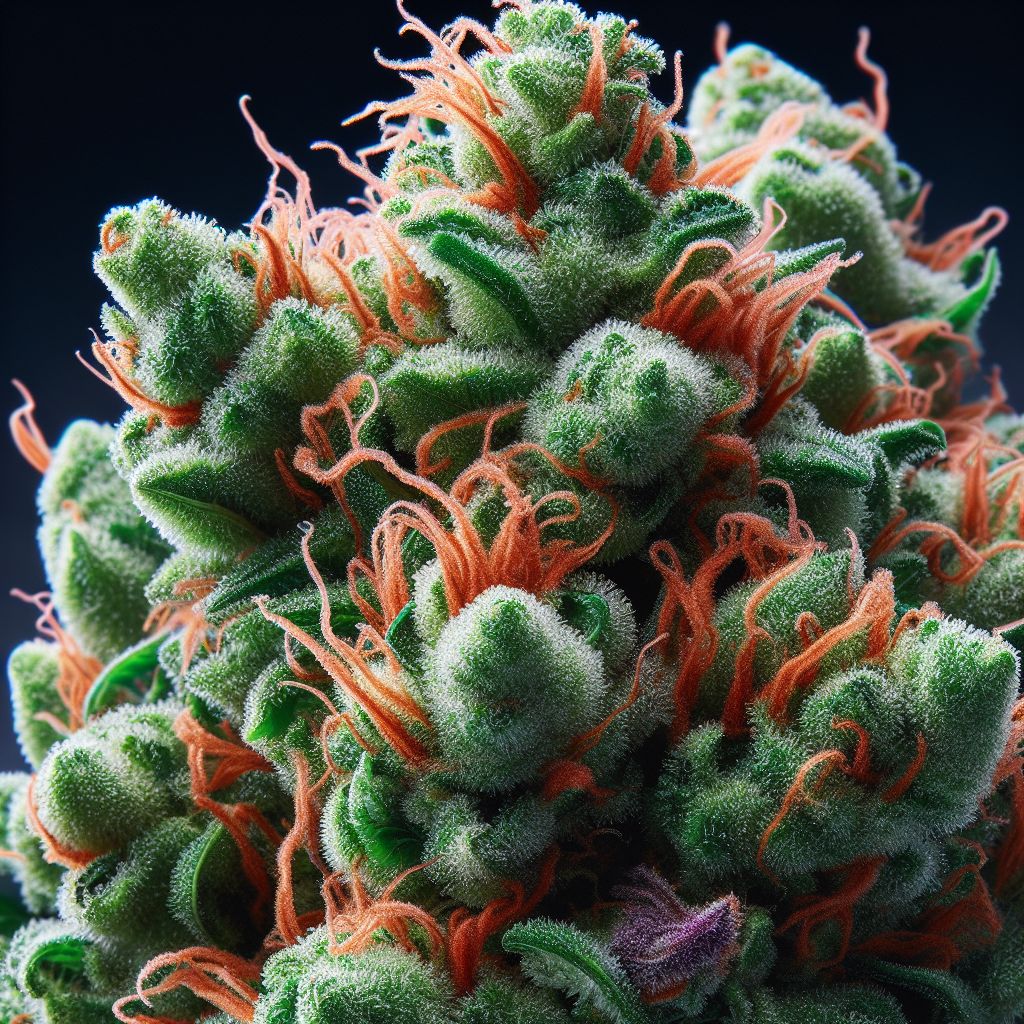
In the world of cannabis, the proliferation of strains has given rise to a multitude of flavors, experiences, and benefits. Among these, the Passion Fruit strain stands out as a delightful and potent option. Named after the juicy tropical fruit, Passion Fruit is celebrated for its tantalizing aroma, unique flavor profile, and balanced effects. This article delves into the intricate details of the Passion Fruit strain, exploring its genetics, cannabinoid content, aromatic characteristics, flavor profile, growth patterns, medical benefits, and overall user experience.
Genetics and Origins
Passion Fruit is typically classified as a hybrid strain, but its genetic makeup can lean slightly towards either the sativa or indica side, depending on the specific breeder. Most commonly, it is a cross of the popular strains Mango and Guava, both of which inherit tropical fruit flavors that contribute to the strain’s vibrant profile.
-
Parent Strains:
- Mango: A well-known strain famous for its luscious fruitiness, Mango enhances the Passion Fruit strain’s sweet notes and provides soothing effects.
- Guava: This strain adds an additional layer of complexity to the flavor and aroma of Passion Fruit while ensuring a well-rounded experience.
- Genetic Composition:
- Passion Fruit typically boasts a THC content that ranges from 20% to 28%, making it one of the more potent strains available.
- The CBD content is usually low to moderate, generally falling around 1% to 3%.
Aromatic Characteristics
The aroma of the Passion Fruit strain is perhaps one of its most engaging qualities. Upon opening a jar of this strain, users are often enveloped in an intoxicating blend of sweet and tangy notes reminiscent of the tropical fruit from which it derives its name.
-
Primary Aroma:
- The dominant scent is undeniably fruity, with strong notes of fresh passion fruit and hints of citrus.
-
Secondary Scent Profiles:
- Users may also detect underlying earthy and herbal tones, adding complexity to the overall bouquet.
- Some batches may present hints of pine or spice, attributed to its genetic lineage.
- Terpene Profile:
- The primary terpenes found in Passion Fruit include Myrcene, Limonene, and Caryophyllene. Myrcene offers relaxing effects, Limonene provides uplifting sensations, and Caryophyllene adds spiciness and potential anti-inflammatory properties.
Flavor Profile
The flavor profile of Passion Fruit is genuinely enticing, making it a favorite among cannabis connoisseurs. Smokers and vapers alike note distinct flavors that mirror its aromatic qualities.
-
Primary Flavors:
- The initial draw presents a potent sweetness, reminiscent of ripe passion fruit, paired with zesty citrus undertones.
-
Secondary Flavors:
- As the smoke or vapor expands, users often report subtle notes of tropical fruit and a refreshing, herbal aftertaste. Many liken the experience to drinking a fresh, tangy fruit smoothie—satisfying and smooth.
- Consumption Methods:
- Regardless of the consumption method, whether through joints, bongs, or vaporization, the flavor remains consistent and enjoyable. Users often appreciate its smooth finish, which is not throat-hitting and allows them to take larger puffs with comfort.
Growth Patterns and Cultivation Tips
For cultivators, Passion Fruit can be an exciting strain to grow, though it comes with its challenges. As a hybrid strain, it combines traits from both sativa and indica plants, leading to a variety of growth patterns.
-
Growth Characteristics:
- Indoor: The strain typically grows to a moderate height, making it manageable for indoor cultivation. It thrives in a controlled environment where temperature and humidity can be optimized.
- Outdoor: When grown outdoors, Passion Fruit enjoys plenty of sunlight and well-drained soil. Given the right conditions, it can yield a generous harvest.
-
Flowering Time:
- The flowering period for Passion Fruit can last anywhere from 8 to 10 weeks, leading to a moderate harvest time, with cultivators advised to monitor trichome maturation for peak potency.
-
Ideal Conditions:
- Temperatures between 70°F and 80°F during the day and slightly cooler temperatures at night promote healthy growth.
- Nutrient-rich soil and a balanced pH level of around 6.0 to 6.8 are ideal for optimal growth.
- Common Pests and Diseases:
- As with most cannabis strains, Passion Fruit is prone to pests like aphids and spider mites. Regular checks and preventive measures can mitigate these issues effectively.
Medical Benefits
The diverse effects of the Passion Fruit strain make it a desirable choice for medical cannabis patients. Many users report that it helps alleviate various ailments, lending credibility to its medicinal properties.
-
Stress and Anxiety:
- The strain’s relaxing and euphoric effects can help manage stress and anxiety, providing users with a calm but lifted mindset.
-
Chronic Pain and Inflammation:
- Thanks to its THC potency and the presence of Caryophyllene, Passion Fruit may assist in alleviating chronic pain, muscle tension, and inflammation.
-
Insomnia:
- Users have reported that Passion Fruit’s soothing properties can help combat insomnia, making it suitable for nighttime use or when restful sleep is desired.
- Appetite Stimulation:
- Known for causing the "munchies," Passion Fruit can be a helpful strain for those dealing with appetite loss, whether due to medical treatment or other factors.
Overall User Experience
The overall experience of consuming the Passion Fruit strain can vary based on tolerance levels, individual preferences, and consumption method. However, several common themes emerge from user feedback.
-
Onset and Duration:
- Users generally report a quick onset of effects within 10 to 15 minutes. The high tends to last around 2 to 4 hours, although this can vary significantly among individuals.
-
Effects:
- Initial effects often include a euphoric and uplifting sensation. Many users report feelings of happiness and sociability, making it suitable for social settings or creative activities.
- The strain has a balanced edge, providing both mental stimulation and physical relaxation, allowing users to feel comfortable yet engaged.
-
Potential Side Effects:
- As with many cannabis strains, some users might experience dry mouth, dry eyes, or a slight increase in heart rate. Less commonly, anxiety or paranoia may occur, especially in those unfamiliar with high-THC strains.
- User Preferences:
- Many users agree that the pleasant aroma and flavor significantly enhance the overall experience, making it a favorite for those who prioritize sensory enjoyment in their cannabis use.
Review Roundup
Pros:
- Aromatic and Flavorful: Enhanced sensory experience with notable tropical fruit flavors.
- Balanced Effects: Provides a mix of relaxation and euphoria that suits various activities.
- Medicinal Benefits: Assists with stress, anxiety, pain management, and appetite stimulation.
- Moderate Growth: Suitable for indoor and outdoor cultivation, making it accessible for home growers.
Cons:
- Potency: Higher THC levels may not be suitable for novice users or those sensitive to THC.
- Potential Side Effects: Some users may experience dry mouth or anxiety.
- Availability: Depending on the region, Passion Fruit may not be as readily available as more common strains.
In conclusion, the Passion Fruit strain of cannabis offers an enticing blend of flavor, effect, and medicinal benefits that appeal to a wide range of users. Its potent THC content, coupled with its delightful aroma and taste, makes it a popular choice among aficionados and casual users alike. For those seeking a strain that balances uplifting effects with a sense of calm, Passion Fruit may just be what they are looking for. Whether consumed for recreational or medicinal purposes, this vibrant strain is sure to leave a memorable impression.




